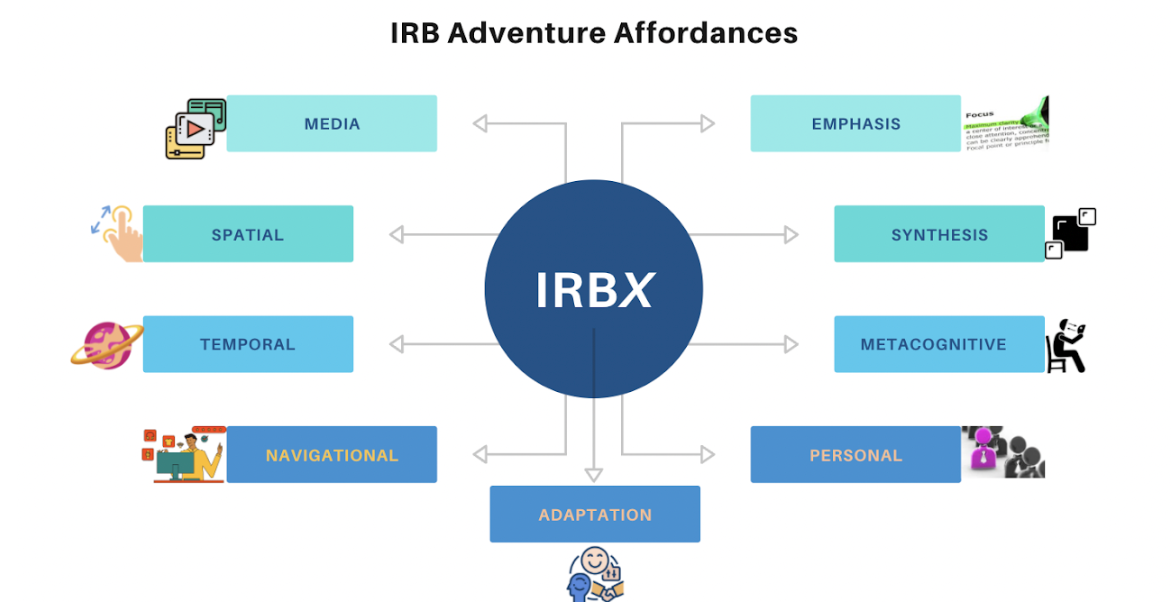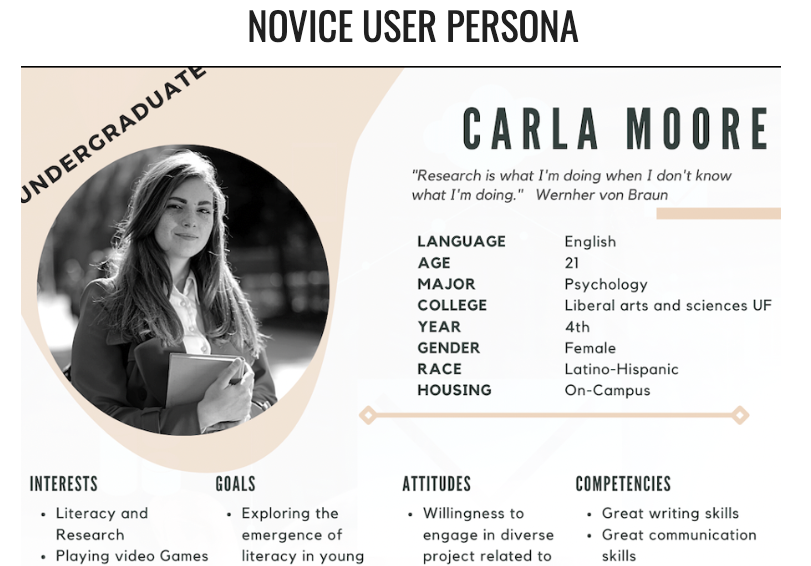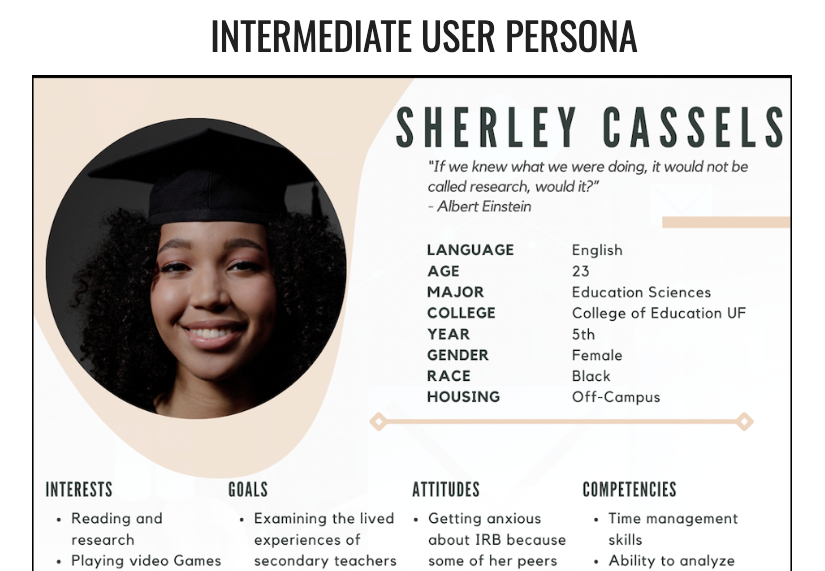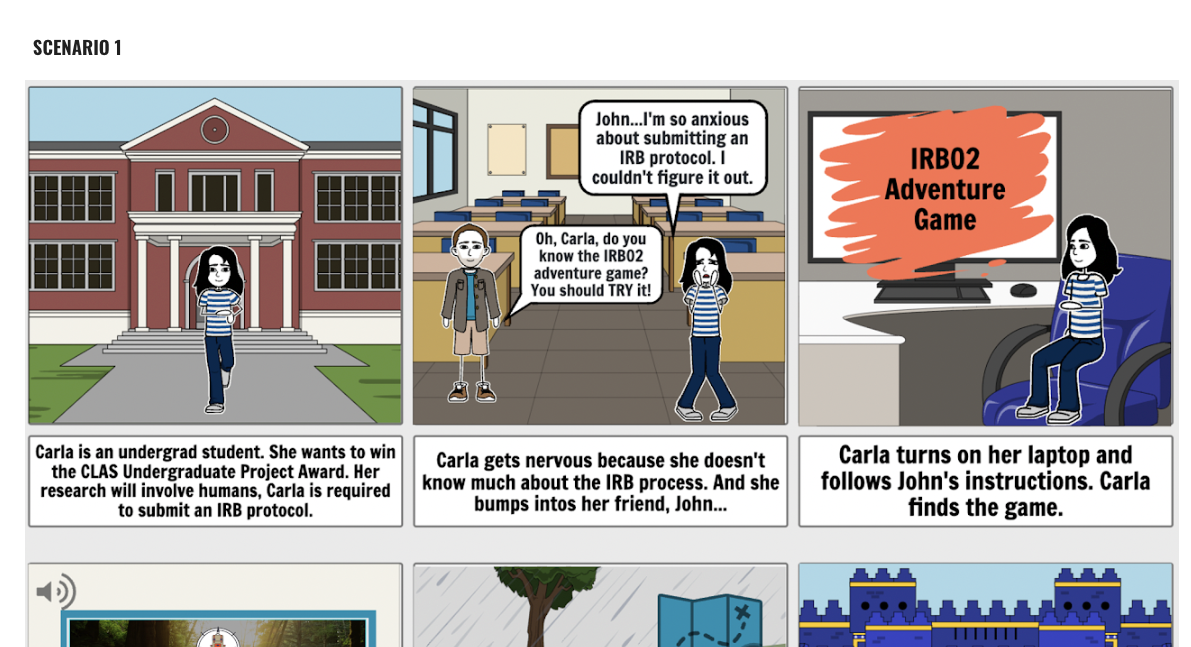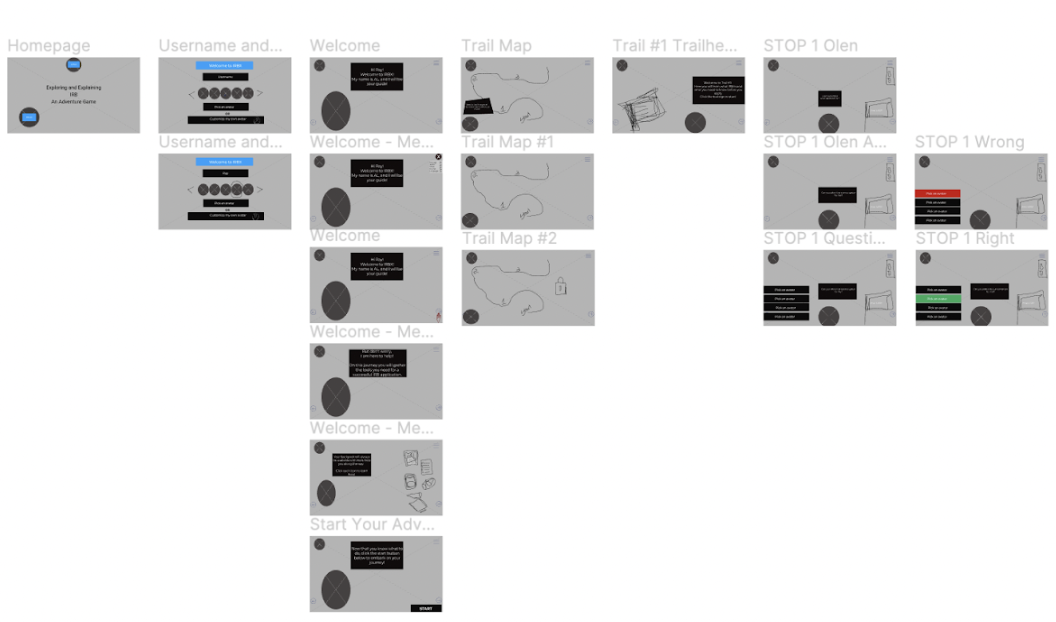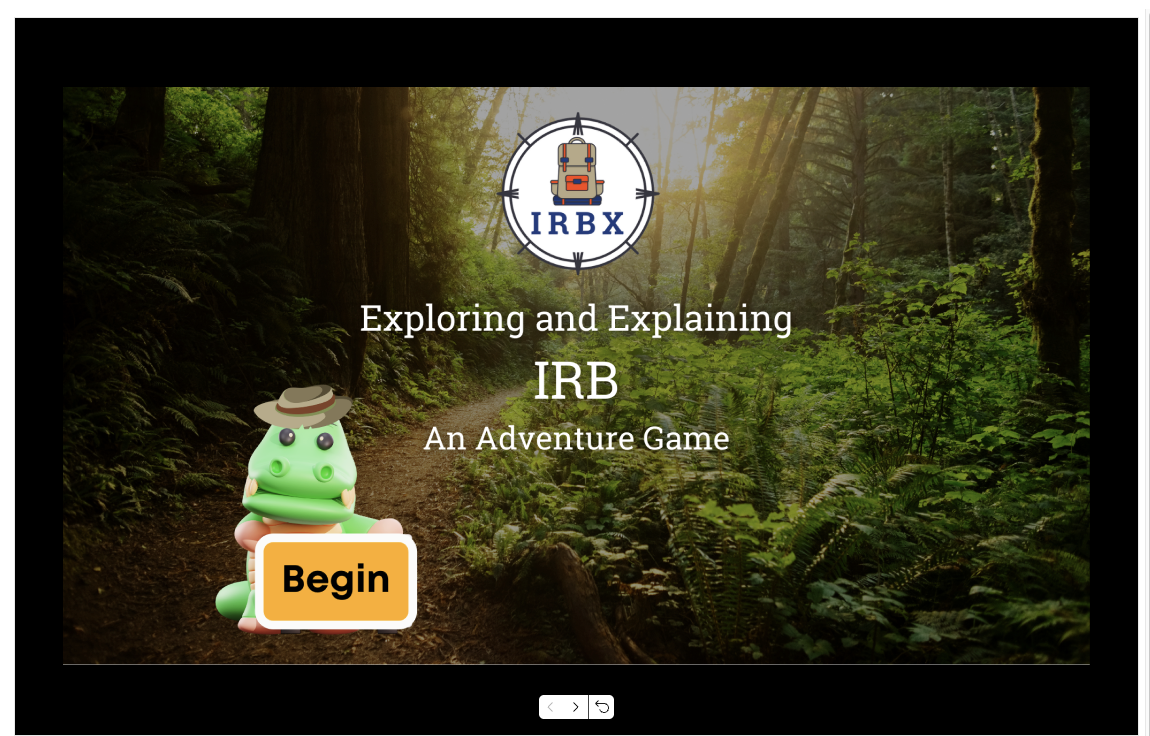-
THE CHALLENGE
University of Florida students find the Institutional Review Board (IRB) process "daunting and overwhelming," with many avoiding research opportunities due to complex application procedures. Traditional online training provides policy overview but lacks contextual information and practical guidance.
THE OPPORTUNITY
Design an engaging, game-based learning solution that transforms a tedious compliance process into an interactive educational experience, specifically targeting Gen Z and Millennial learning preferences.
MY ROLE
UX Researcher & Prototype Designer
Conducted user research with UF student populations
Developed user personas based on research expertise levels
Designed low-fidelity and high-fidelity prototypes for game interface
Conducted usability testing and iterative design improvements
-
USER-CENTERED RESEARCH APPROACH
Target Audience Analysis
Primary Users: 2,000+ UF students annually interested in conducting research
Demographics: 89% aged 18-29 (Gen Z and Millennials)
Challenge: Complex federal compliance process with variations in interpretation
Generational Learning Preferences Research
Conducted literature review identifying key characteristics:
Gen Z: Self-paced, self-directed, interactive learning preferences
Millennials: Active learning, "doing rather than knowing" orientation
Both generations: Tech-savvy, impatient, desire quick feedback
Mobile-first approach: "Gen Z is mobile and app-native"
Primary Research Methodology
Designed and administered front-end survey to UF students:
12 participants across undergraduate and graduate levels
Open-ended questions about game-based learning experience
App usage patterns for complex process navigation
Specific IRB process experience and pain points
Mixed-methods analysis of qualitative responses
-
DATA-DRIVEN INSIGHTS
Game-Based Learning Reception
✓ 60% had previous experience with educational games
✓ 90% believed games make learning more engaging and interesting
✓ Positive experiences: Reward systems, level progression, competition
✓ Concerns: Games must integrate well with learning content, not distract
Mobile App Preferences
✓ Strong preference for apps that simplify complex processes
✓ Examples: TurboTax, banking apps, investment platforms
✓ Key success factors: Ease of access, reduced click-through, search functionality
✓ Caution: Apps need additional benefits beyond web versions
IRB Process Pain Points
"The process was cumbersome and confusing" - Graduate Student
"I came out of IRB training with a ton of confusion" - Undergraduate
"It seemed boring for me. I just pressed next to watch the next training until it ended" - Graduate Student
Validation: Research supports game-based and mobile delivery methods for target audience
-
RESEARCH-BASED PERSONA DEVELOPMENT
Expert User Profile
Background: New faculty, postdoc, research associates
Attitude: Efficiency-focused, wants quick IRB approval
Goals: Easy navigation, streamlined submission process
Tools: Bookmarked IRB website, organized asset folders
Design Implications: Advanced pathways, skip basic content
Intermediate User Profile
Background: Some research awareness, unfamiliar with IRB role
Attitude: Interested in understanding IRB goals and timing
Goals: Comprehensive IRB understanding, application guidance
Tools: IRB website, training materials, local file organization
Design Implications: Contextual information, process overview
Novice User Profile
Background: Limited IRB interaction experience
Attitude: Defers to experienced team members
Goals: Learn IRB fundamentals, understand starting points
Tools: Basic IRB website access, training manual
Design Implications: Step-by-step guidance, foundational content
Persona Validation: Based on survey data and literature review of student research patterns
-
SYSTEMATIC DESIGN METHODOLOGY
Low-Fidelity Prototype Development
Platform: Figma for collaborative design and rapid iteration
Initial Concept: 2D adventure game with level-based progression
Core Mechanics: Trail-based exploration, item collection, knowledge validation
Interface Elements: Backpack inventory, progress tracking, patch reward system
User Flow: Introduction → Level Selection → Trail Navigation → Assessment → Completion
Prototype Testing Approach
Figma wireframes for initial concept validation and user flow testing
Interactive prototypes for navigation and user experience validation
Collaborative design reviews with stakeholders using Figma's sharing features
User feedback integration for iterative design improvements
Accessibility considerations for diverse learning needs
High-Fidelity Prototype Features
Design Platform: Figma for comprehensive interface design
Game Environment Design:
Interactive prototype demonstrating trail-based navigation
Visual design system for consistent game aesthetics
Component library for scalable interface elements
Responsive design considerations for future platform expansion
Development Platform: Articulate Storyline 360 for interactive learning
Scenario-based learning modules with branching interactions
Knowledge check integration at each level completion
Progress tracking and achievement system implementation
SCORM compliance for integration with learning management systems
-
GAME-BASED LEARNING ARCHITECTURE
Adventure Game Framework
Level Structure: Each IRB application page becomes explorable game level
Learning Mechanics: Trail exploration reveals required information components
Knowledge Validation: Interactive Non-Player Characters pose guided questions for understanding
Achievement System: Completion patches provide progress feedback and motivation
User Experience Innovations
Context-Rich Learning: Each interaction provides rationale for IRB requirements
Self-Paced Progression: Users advance based on comprehension, not time constraints
Multiple Learning Pathways: Different trails accommodate various learning preferences
Real-World Application: Game mechanics directly mirror actual IRB submission process
Accessibility Design Considerations
Desktop platform ensures compatibility with assistive technologies
Visual and textual information redundancy for different learning preferences
Clear navigation patterns for users with varying technical expertise
Scalable difficulty based on user experience level (personas)
-
RESEARCH AND DESIGN INSIGHTS
User Research Methodology Success:
Mixed-methods approach provided comprehensive understanding
Direct user feedback more valuable than demographic assumptions
Generational research informed but didn't determine design decisions
Iterative prototype testing essential for user-centered design
Design Process Applications:
User personas must reflect actual usage patterns, not just demographics
Educational gaming requires careful balance between engagement and learning
Accessibility considerations strengthen design for all users
Research validation prevents costly development of unused features
Corporate Training Applications:
Same research methodology applies to workplace learning challenges
User personas essential for designing effective employee training
Game-based learning can transform compliance training engagement
Mobile-first considerations critical for modern workforce learning
Transferable Skills Demonstrated:
✓ Comprehensive user research design and implementation
✓ Persona development based on behavioral data
✓ Prototype design from concept through high-fidelity implementation
✓ Iterative design improvement based on user feedback
✓ Cross-platform accessibility and inclusive design principles
-
BOTTOM LINE IMPACT
This project demonstrates my ability to work in team and to:
✓ Conduct comprehensive user research with diverse populations
✓ Transform qualitative feedback into actionable design insights
✓ Create user personas that drive meaningful design decisions
✓ Design and iterate prototypes based on evidence rather than assumptions
✓Apply educational technology principles to solve real institutional challenges
Applied user-centered design methodology to research student needs and prototype an interactive learning game that makes complex IRB processes accessible and engaging.
